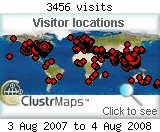By Michelle Remo
Philippine Daily Inquirer
First Posted 01:41:00 05/31/2009
MANILA, Philippines—The global economic downturn, which recently pulled the Philippines down to its slowest growth in a decade, will result in the country’s failure to meet its poverty-reduction goal by 2010 and is expected to increase the number of poor Filipinos.
Under the Millennium Development Goals, to which the Philippines and other member-countries of the United Nations are signatories, extreme poverty shall have been eradicated by 2015.
Consistent with this goal, the Philippines set a target of reducing poverty incidence to 17-20 percent of Filipino families by 2010 from 26.9 percent in 2006.
Economic officials, however, admitted that the global crisis, considered the worst since the Great Depression of the 1930s, has made the poverty-reduction goal of the Philippines and other countries virtually impossible to achieve.
Diwa Guinigundo, Bangko Sentral ng Pilipinas deputy governor and a former economics professor, for one, said the timetable for bringing down poverty incidence to 20 percent or less by 2010 and eradicating extreme poverty by 2015 should be adjusted.
“There is scope for delaying the goals. The crisis has led to the destruction of wealth, thus affecting consumption levels,” Guinigundo said Friday.
He noted that with the Philippine population growing faster than its economy, per capital income was naturally reduced.
Per capita income
Per capita income, a rough measure of the income of individuals in an economy, is the total output of the economy divided by its population.
Per estimates, annual per capita income in the Philippines stood at $1,400 as of 2006. Government data show the population growth rate at 2.1 percent.
In the first quarter, the Philippine economy, measured in terms of its gross domestic product [GDP], posted an annual growth of 0.4 percent in real terms, its lowest in 10 years.
GDP, the most common measure of an economy, is the sum of the value of goods produced and services rendered within an economy in a given period.
The Philippine economy’s lackluster performance veered the country off track from meeting its growth target of between 3.1 and 4.1 percent for the full year, and is in fact feared to signal a recession in the months ahead.
Anemic global demand
Economists blamed the slowdown to the plunge in exports, which were badly hit by anemic global demand. The United States and Europe, drivers of the global turmoil, are two of the Philippines’ biggest export markets.
As a result of dwindling incomes, some export-oriented firms were reported to have reduced their workforce.
The National Economic and Development Authority (Neda) said earlier the economy needed to grow by at least 7 percent over several years in order to reduce poverty incidence.
Officials said, however, that measures were being taken to arrest the economic downturn.
The BSP has implemented a series of rate cuts to bring down bank lending rates, which is expected to spur business activity.
The government also committed to boost public spending in the months ahead to help create jobs and increase aggregate income.
Philippine Daily Inquirer
First Posted 01:41:00 05/31/2009
MANILA, Philippines—The global economic downturn, which recently pulled the Philippines down to its slowest growth in a decade, will result in the country’s failure to meet its poverty-reduction goal by 2010 and is expected to increase the number of poor Filipinos.
Under the Millennium Development Goals, to which the Philippines and other member-countries of the United Nations are signatories, extreme poverty shall have been eradicated by 2015.
Consistent with this goal, the Philippines set a target of reducing poverty incidence to 17-20 percent of Filipino families by 2010 from 26.9 percent in 2006.
Economic officials, however, admitted that the global crisis, considered the worst since the Great Depression of the 1930s, has made the poverty-reduction goal of the Philippines and other countries virtually impossible to achieve.
Diwa Guinigundo, Bangko Sentral ng Pilipinas deputy governor and a former economics professor, for one, said the timetable for bringing down poverty incidence to 20 percent or less by 2010 and eradicating extreme poverty by 2015 should be adjusted.
“There is scope for delaying the goals. The crisis has led to the destruction of wealth, thus affecting consumption levels,” Guinigundo said Friday.
He noted that with the Philippine population growing faster than its economy, per capital income was naturally reduced.
Per capita income
Per capita income, a rough measure of the income of individuals in an economy, is the total output of the economy divided by its population.
Per estimates, annual per capita income in the Philippines stood at $1,400 as of 2006. Government data show the population growth rate at 2.1 percent.
In the first quarter, the Philippine economy, measured in terms of its gross domestic product [GDP], posted an annual growth of 0.4 percent in real terms, its lowest in 10 years.
GDP, the most common measure of an economy, is the sum of the value of goods produced and services rendered within an economy in a given period.
The Philippine economy’s lackluster performance veered the country off track from meeting its growth target of between 3.1 and 4.1 percent for the full year, and is in fact feared to signal a recession in the months ahead.
Anemic global demand
Economists blamed the slowdown to the plunge in exports, which were badly hit by anemic global demand. The United States and Europe, drivers of the global turmoil, are two of the Philippines’ biggest export markets.
As a result of dwindling incomes, some export-oriented firms were reported to have reduced their workforce.
The National Economic and Development Authority (Neda) said earlier the economy needed to grow by at least 7 percent over several years in order to reduce poverty incidence.
Officials said, however, that measures were being taken to arrest the economic downturn.
The BSP has implemented a series of rate cuts to bring down bank lending rates, which is expected to spur business activity.
The government also committed to boost public spending in the months ahead to help create jobs and increase aggregate income.












